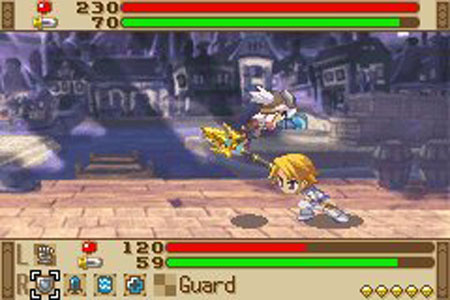
Nonetheless, a large amount of dialogue was written to keep things fresh for any number of playthroughs, and I congratulate Atlus on taking the time to localize such a small game despite its large script. Some things stick out like a sore thumb for instance, whether male or female, many female NPCs ask for a chance to kiss you. Obviously, with all of the possible combinations of protagonist and sidekick (the number is eight, for those of you who failed all those wordy math problems), a lot of dialogue had to have been written.

The similarities continue, as the protagonist (again, gender of your choice) chooses one of four possible summon creatures to be his/her Guardian Beast. Despite the new location and characters, the basic premise is almost entirely the same: start with a character choice (male or female), and learn that said character is the child of a famous Craftknight who saved the village (or perhaps the whole world) from impending doom by sealing off a wicked summon creature. Indeed, there is no mention of Craftlords or Wystern. The second Swordcraft “Story” takes place in a town completely removed from the first, with a completely different setting and premise.

One may imagine that the game is “dated,” but it’s surprising to learn just how great a game can be even when it’s two years old. The follow-up to the first Swordcraft Story, Summon Night: Swordcraft Story 2 was released in Japan one year after its predecessor, though the span between the two games’ US release was only a few months.


 0 kommentar(er)
0 kommentar(er)
